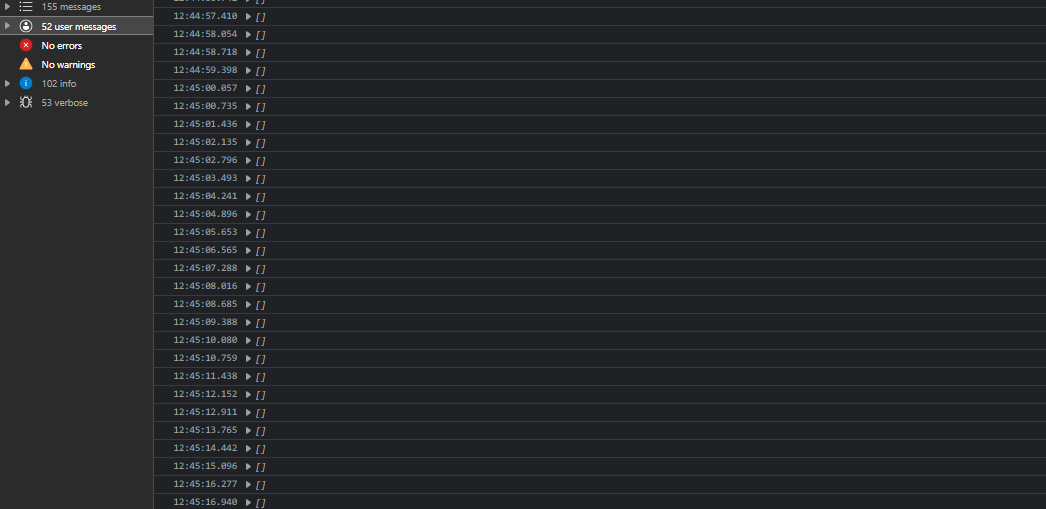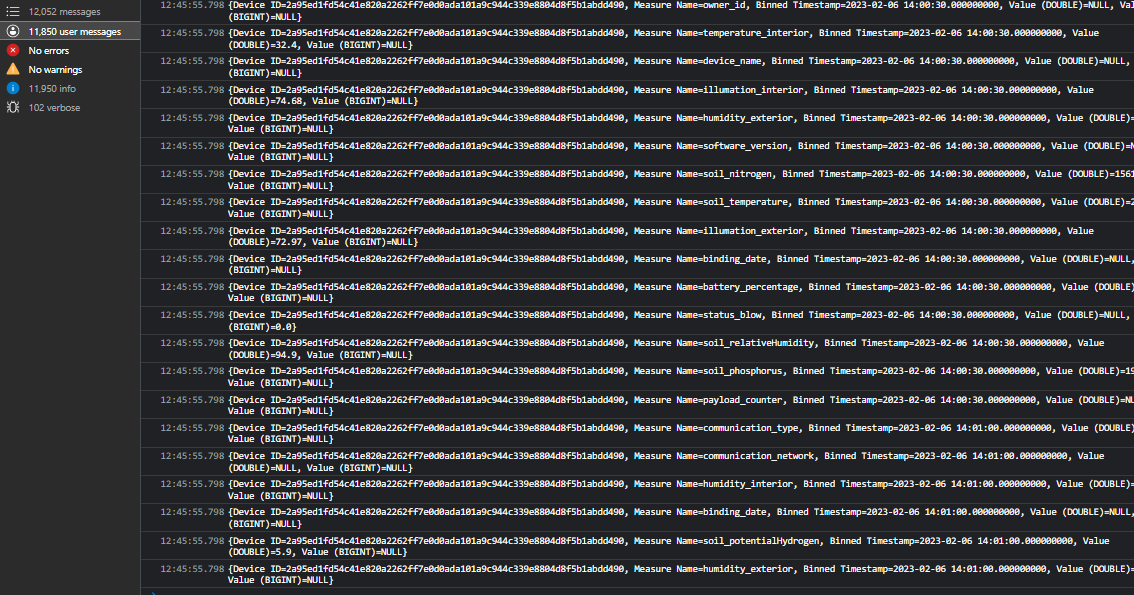Hello,
I have successfully configured Class QueryCommand on a ReactJS project and it works well when I use a query that returns less than 2,000 records.
The problem I have is when I use a broader query term like to return all the rows inside the table then the QueryCommand just loops with a ProgressPercentage of 0, it only returns the metadata of the query but no data (the same query works well through the AWS Timestream Query Editor). This is what returns on my console log:
Current query status: {"CumulativeBytesMetered":10000000,"CumulativeBytesScanned":0,"ProgressPercentage":0}
I read in the QueryCommand class documentation (link shared above) the following:
If the size of the row (including the query metadata) exceeds 1 MB, then the query will fail with the following error message: Query aborted as max page response size has been exceeded by the output result row
So perhaps this is the reason for my problem but I am not getting that error either.
My build is the same as the AWS timestream sample found here: https://github.com/awslabs/amazon-timestream-tools/tree/f3e2a6037a158eed41ed285deec4562d5b3c73fa/sample_apps/js with @aws-sdk/client-timestream-query
My only question is:
- Is it possible to use the Class QueryCommand to query and paginate all the records in a table?
Update:
I've found out that there is something strange going on the iteration seems to be happening but not showing, the following picture is taken from the console log:

If I start a page refresh then I suddenly start getting all the query rows while the page refresh last:

Best regards.
Gianpiero Benvenuto
 AWS OFFICIALUpdated 2 months ago
AWS OFFICIALUpdated 2 months ago AWS OFFICIALUpdated 3 months ago
AWS OFFICIALUpdated 3 months ago AWS OFFICIALUpdated 2 years ago
AWS OFFICIALUpdated 2 years ago AWS OFFICIALUpdated 5 months ago
AWS OFFICIALUpdated 5 months ago

Hello alatech, thank you for your comment, I've implemented what you said, I am using the exact code as shown on https://github.com/awslabs/amazon-timestream-tools/tree/f3e2a6037a158eed41ed285deec4562d5b3c73fa/sample_apps/js with @aws-sdk/client-timestream-query but it is not working. The strange thing is that if I refresh the page with the console log open I suddenly start seeing all the query results coming up fast. I have updated my question with some screenshots of what I am experiencing.